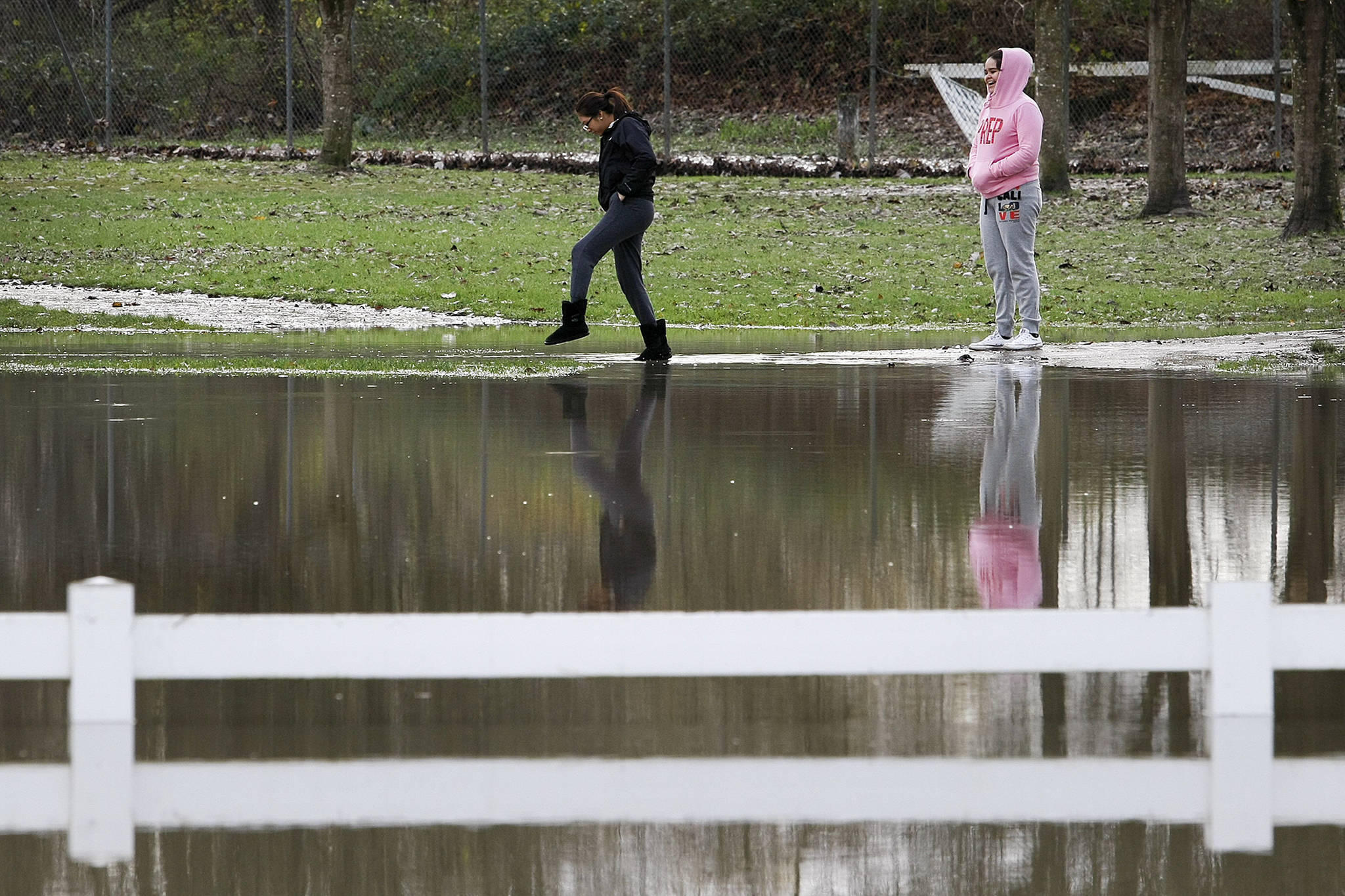By The Herald Editorial Board
Nearly everything within a river’s watershed is effected by everything that happens in and along that river, with consequences for property and jobs of riverside communities and farms; maintenance of roads and bridges; and the protection of fish and wildlife.
Yet, for decades, when problems have surfaced from flooding, eroding riverbanks, loss of habitat — for fish, wildlife and humans — and more, the solutions have tended toward the myopic, focused on specific outcomes that didn’t look up- or downriver to judge their wider impacts or how they might better address needs across the larger river basin.
The Floodplains by Design effort — a public-private partnership established by the state Legislature — has brought together public and private interests to discuss and plan solutions that consider the river as a whole.
“This brings together farmers, tribes, environmental groups and government to find cooperative projects with common interests,” said Bob Carey, strategic partnership director for the Washington state chapter of The Nature Conservancy, which works with the state Department of Ecology and Puget Sound Partnership to administer the program in the state.
Since its start in 2013, the program has invested $115 million in state funds, joined by $107 million from other sources, in projects in 15 counties in the state, including Snohomish County. Thirty-six projects in 13 major flood plains have provided greater flood protection for 38 communities, built nearly 10 miles of levees, removed 700 homes from high-risk floodplains, restored salmon habitat along 25 miles of river, reconnected 2,500 acres of flood plains, built pubic trails and access along eight rivers, protected 500 acres of farmland and improved the water quality for 1,220 acres of shellfish beds.
That success in bringing together groups that sometimes worked at cross-purposes has resulted in more requests for funding throughout the state, more than 125 projects requesting $325 million in funding. This year, as the Legislature considers its two-year capital budget, the Floodplains effort selected 18 projects throughout the state, specific projects that have been ranked for their importance and their cost-effectiveness, a request totaling $70 million.
Two of the projects included are in Snohomish County:
The first, sponsored by Snohomish County and the Sustainable Lands Strategy, would fund $4.9 million in floodplain projects along the Sultan Reach of the Skykomish River, between Sultan and west of Monroe. The project will improve emergency access and reduce flood-forced closures of roads for 238 homes; correct four salmon-blocking culverts, improve 3 miles of stream habitat; restore 30 more acres of river habitat; and protect 200 acres of floodplain for farmland and natural areas.
The second, sponsored by the Stillaguamish Tribe, would fund $7.5 million in projects along the Stillaguamish River, including separation of flood and stormwater to reduce flooding and improve water quality; rebuild portions of failing dike; restore 250 acres of estuary habitat; treat dairy wastewater; improve fisheries and flood control by reducing landslide sediment; and purchase of 200 acres of farmland development rights and 158 acres of floodplain property.
The purchase of property and easements, Carey explained during a meeting with the editorial board, gives the river “room to roam” by moving homes and farm buildings out of danger from floods and the changing course of the river.
Funding for the Snohomish County projects, as well as the other 16 projects, depends on how much of the $70 million request is honored. Gov. Jay Inslee, in his budget recommendation to lawmakers, requested $42 million for the Floodplains projects. At that level, the Skykomish project — ranked sixth among the 18 projects — would get its funding, but the Stillaguamish project — ranked ninth, falls just short, as would nine other projects in the state.
The Legislature, in adopting the Floodplains by Design program for the state, now has the benefit of seeing how its investment in those projects has benefited the state’s resources, its economy and its residents.
The investment in flood protection alone is important. A study last year by the National Oceanic and Atmospheric Administration, detailed in a report by the National Institute of Building Sciences, determined that every $1 spent on pre-disaster mitigation prevents $6 in losses to future disasters.
Beyond potential losses to floods, the work — because it has been organized cooperatively with the range of stakeholders — will also return benefits in improved habitat for fisheries, preservation of the environment and more recreational opportunities.
The funding approved by lawmakers in the last three capital budget has not been insignificant. But the Floodplains by Design concept — and its value to all — has been more than proven and warrants that the full $70 million request be approved.
Video: An animated explanation of how Floodplains by Design works. (Floodplains by Design).
Talk to us
> Give us your news tips.
> Send us a letter to the editor.
> More Herald contact information.

























